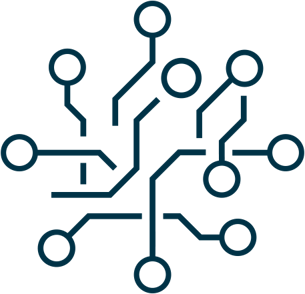The cloud has revolutionized IT landscapes, fostering agility, scalability, and cost-effectiveness for businesses. However, this dynamic environment also introduces complexities in maintaining effective IT governance and compliance. As organizations leverage the cloud, robust cloud infrastructure monitoring becomes the basis of ensuring responsible resource utilization, data security, and regulatory adherence.
The Critical Role of Cloud Infrastructure Monitoring
With the breakneck pace of IT these days, efficient cloud infrastructure monitoring transcends mere performance tracking. It serves as the backbone of strong IT governance, promoting accountability, transparency, and responsible cloud resource management. By proactively monitoring resource utilization, access controls, and security configurations, organizations can identify and mitigate potential risks before they impact operations or lead to compliance failures.
Challenges of Governance and Compliance in the Cloud
The cloud introduces unique challenges to traditional governance and compliance approaches. The shared responsibility model, where cloud providers handle infrastructure security and users manage data security, necessitates a collaborative approach. Furthermore, the dynamic nature of cloud environments, with frequent deployments and scaling, demands continuous monitoring to ensure consistent compliance.
Understanding Cloud Governance and Compliance
Cloud governance establishes a framework for managing and securing cloud resources in alignment with organizational objectives and regulations. It encompasses policies for access control, resource allocation, data protection, and disaster recovery. Compliance refers to adhering to industry standards and government regulations, such as the General Data Protection Regulation (GDPR), Health Insurance Portability and Accountability Act (HIPAA), and Service Organization Control Type 2 (SOC 2).
Cloud Infrastructure Monitoring: The Bridge Between Governance and Compliance
Effective cloud infrastructure monitoring acts as the bridge between robust governance and demonstrable compliance. It provides real-time insights into critical areas like:
- Resource Utilization: Monitoring resource usage helps optimize costs and identify potential bottlenecks.
- Access Controls: Tracking user activity and access permissions ensures adherence to security protocols.
- Security Configurations: Proactive monitoring detects misconfigurations that could expose vulnerabilities.
- Compliance Controls: Verifying the implementation of mandated security and privacy controls.
Navigating the Cloud Monitoring Landscape
While the importance of cloud infrastructure monitoring is clear, IT and business leaders face challenges in its implementation. Common pitfalls include:
- Limited Visibility: Lack of comprehensive monitoring solutions can leave blind spots in cloud deployments.
- Manual Processes: Being reliant on manual monitoring is time-consuming and prone to human error.
- Disconnected Tools: Disparate monitoring tools for different cloud services hinder holistic analysis.
Essential Components of an Effective Monitoring Strategy
To address these challenges, organizations need a well-defined monitoring strategy with the following components:
- Key Metrics and Indicators: Define key metrics aligned with governance and compliance objectives (e.g., resource utilization rates, access logs, security configuration changes).
- Cloud-Native Monitoring Tools: Utilize native monitoring tools offered by cloud providers (e.g., AWS CloudWatch, Google Cloud Monitoring, Azure Monitor). These tools provide pre-configured dashboards and metrics for comprehensive insights into the specific cloud environment.
- Automated Compliance Solutions: Leverage cloud data security solutions and automated compliance tools to streamline compliance assessments and generate audit reports. These solutions can automate tasks such as configuration drift detection and remediation, ensuring continuous compliance.
The Power of Automation and Artificial Intelligence (AI)/ Machine Learning (ML)
Integrating automation with monitoring significantly improves efficiency and accuracy. Techniques like AI and machine learning can analyze vast amounts of data to identify patterns and predict potential compliance risks or security threats. This proactive approach allows for faster remediation and strengthens overall cloud security posture.
Best Practices for Enhanced Cloud Infrastructure Monitoring
- Develop a Comprehensive Strategy: Align cloud monitoring with business objectives, governance policies, and relevant compliance frameworks.
- Prioritize Visibility and Transparency: Ensure clear visibility into cloud resource utilization, access controls, and security configurations.
- Integrate with Existing IT Infrastructure: Integrate cloud monitoring tools with existing IT management tools for a unified view of security posture.
- Configure Proactive Alerts and Notifications: Define clear alert thresholds and notification workflows to address compliance issues promptly.
Governance and Compliance in a Multi-Cloud Environment
The complexities of multi-cloud deployments necessitate an additional layer of focus on governance and compliance. Organizations need strategies for:
- Consistent Policy Enforcement: Develop a centralized governance framework with consistent policies enforced across all cloud providers.
- Centralized Monitoring: Implement tools for centralized monitoring and log aggregation across various cloud environments.
By adopting a comprehensive approach to cloud infrastructure monitoring, organizations can achieve robust IT governance, ensure regulatory compliance, and unlock the full potential of their cloud investments. Investing in cloud data security solutions, automated compliance tools, and leveraging AI/ML capabilities will empower proactive risk management and ensure a secure and compliant cloud journey. Contact Adnovum today to maximize your cloud investments and optimize your cloud compliance.
📩 Sign up for our newsletter and gain access to exclusive executive insights and event invitations.





